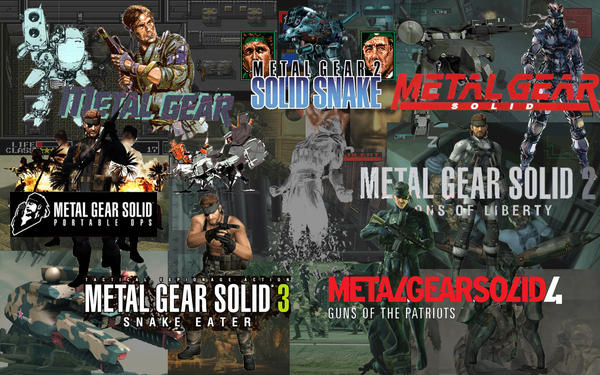

Prefer to listen instead?
Hear the full breakdown of the Metal Gear Solid legacy and its cultural impact, brought to you by Pixlehale. Clear, thought-provoking analysis, now in audio format.
Few video game franchises have achieved the cultural cachet and critical reverence of Metal Gear Solid. Hideo Kojima’s iconic stealth-action series, which spans from 1998’s Metal Gear Solid on the original PlayStation to 2015’s Metal Gear Solid V: The Phantom Pain, is widely regarded as one of the greatest of all time. Its influence on game design is monumental – popularizing the stealth genre for mainstream audiences and pioneering in-engine cinematic cutscenes that felt ripped from a Hollywood thriller. Beyond innovative gameplay and presentation, Metal Gear Solid is celebrated for its ambitious storytelling, memorable characters, and the singular auteur touch of its creator, Hideo Kojima. It’s a series that deftly mixes tactical action with philosophical questions, serving up tactical espionage alongside meditations on war, technology, and humanity’s future.
In this in-depth look at the Metal Gear Solid saga, we’ll explore what makes these games enduring classics. From gameplay innovations (like the very notion of hiding in a cardboard box to evade guards) to Kojima’s cinematic direction and quirky humor, each installment pushed the envelope. We’ll also delve into the major social and political themes that thread through the series’ narrative tapestry: the morality of war, nuclear proliferation, government secrecy and private militaries, information control, and even the implications of artificial intelligence on human identity. Accessible enough for a pop culture reader yet rich with detail for longtime gamers, consider this a comprehensive tour of the Metal Gear legacy – and why Solid Snake’s codec calls still echo in the halls of gaming history.
Metal Gear Solid (1998) – Stealth Action Makes History
Released on the PlayStation in 1998, Metal Gear Solid (MGS1) was a breakthrough that put stealth gameplay on the map for a broad audience. Players stepped into the shoes of Solid Snake, an elite infiltrator on a mission to stop a nuclear-equipped bipedal tank (the titular Metal Gear) from falling into terrorist hands. Instead of running-and-gunning, MGS1 emphasized sneaking – avoiding cameras, distracting guards, hiding in shadows – a then-unconventional style that MGS1 executed with nail-biting tension and clever design. It helped popularize the stealth genre in gaming and proved that evasion and strategy could be as exciting as head-on combat.
Critics and players alike were blown away by the game’s cinematic presentation. Kojima treated the narrative like a blockbuster thriller: lengthy codec conversations fleshed out characters, dramatic cutscenes advanced a complex spy storyline, and even the game’s camera angles and orchestral score felt film-inspired. This was one of the first titles to demonstrate in-engine cutscenes and deep voice acting on such a scale, lending a movie-like gravitas to the experience. The story itself was equally ambitious – a twisting plot of genetic engineering, espionage, and double-crosses, with themes of nuclear deterrence and the ethics of warfare ever-present.
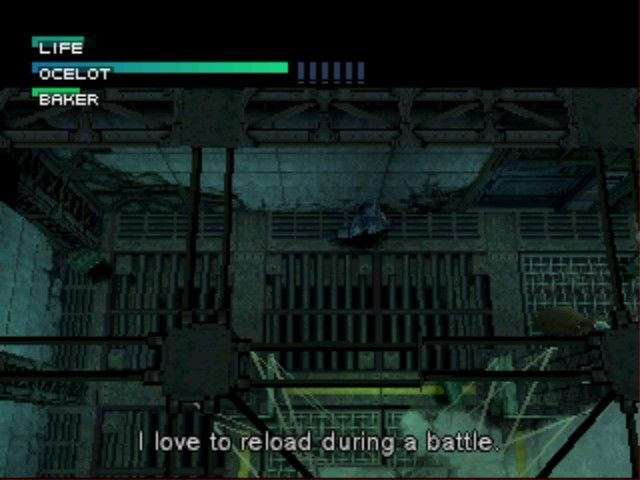
The impact of MGS1 on the industry cannot be overstated. It holds a sterling reputation and is frequently cited among gaming’s all-time greats. More than two decades later, the battle at Shadow Moses Island is remembered as a watershed moment for narrative games. By proving that players would invest in complex storylines and stealthy mechanics, Metal Gear Solid opened the door for countless successors. Even Splinter Cell’s developers admit Kojima’s work showed them “how stealth should be done.” From here, Kojima had permission to dream even bigger, and the series would only grow more daring in scope.
Metal Gear Solid 2: Sons of Liberty (2001) – A Daring Postmodern Sequel
When Metal Gear Solid 2: Sons of Liberty arrived on PlayStation 2 in 2001, anticipation was sky-high. How do you follow a game that changed the industry? Kojima’s answer: by boldly subverting expectations. MGS2 starts as a familiar sequel – players control Solid Snake on a mission aboard a tanker – but soon Kojima pulls one of gaming’s most famous switcheroos, placing gamers in the role of a new character (Raiden) for the bulk of the story. This creative risk initially polarized fans, yet today Sons of Liberty is recognized as a visionary installment that was ahead of its time.
On the surface, MGS2 refined the stealth gameplay with PS2-powered improvements: more complex enemy AI, first-person aiming mode for precision shots, and interactive environments. It was stealth gameplay evolved, and wrapped in graphical fidelity that was astounding in 2001 – rain-soaked deck scenes and detailed character models that showed off the new hardware. The boss fights were as inventive as ever (a duel with a roller-skating bomber named Fatman, or a showdown against a harpoon-wielding vampire), blending tactical puzzle-solving with action. Critics praised its gameplay depth and visual prowess.
Yet it’s the story and themes of MGS2 that truly left a mark. What seemed at first a by-the-numbers anti-terror mission unravels into a labyrinthine commentary on information control, digital censorship, and the blurred line between truth and fiction. The game was strikingly prescient: its plot involves a powerful AI system (the Patriots) that manipulates digital information and history itself – essentially predicting today’s debates about AI, surveillance, and “fake news” well back in 2001.
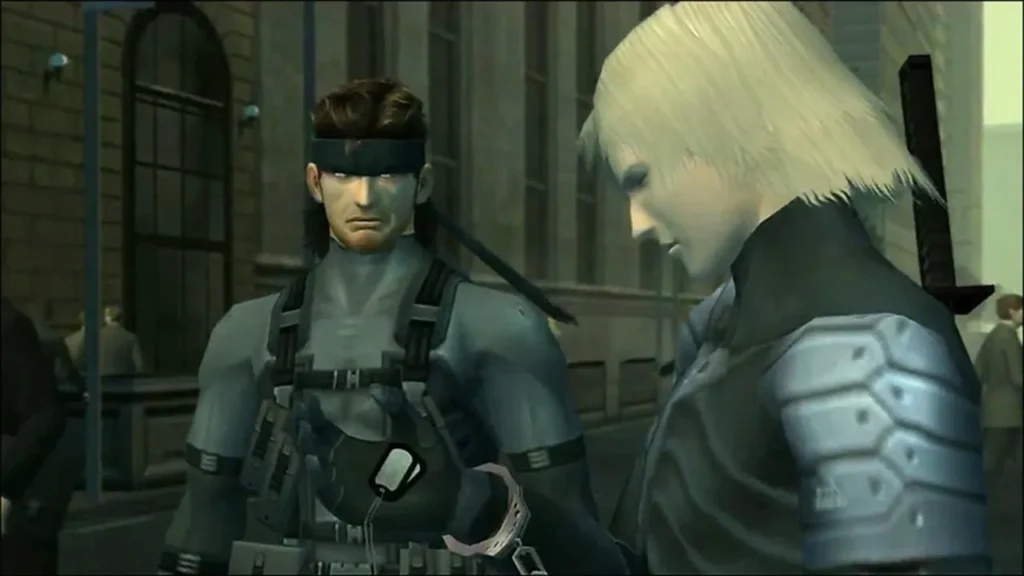
By the finale, as Raiden confronts an AI that lectures about meme theory and societal manipulation, players realized Kojima had used the trappings of a blockbuster sequel to deliver a postmodern critique of society. Scholars and critics have since dissected Sons of Liberty as one of the first truly philosophical video games. Little of this was expected from a big-budget action game, and it has cemented MGS2’s legacy as arguably the most thematically ambitious entry.
Metal Gear Solid 3: Snake Eater (2004) – A Cold War Epic
After the futuristic digital intrigue of MGS2, Kojima took a hard turn with Metal Gear Solid 3: Snake Eater – a Cold War-era prequel set in the jungles of 1964. Instead of high-tech corridors and AI conspiracies, Snake Eater unfolds in a lush Soviet jungle at the height of the Cold War, following a young special agent codenamed Naked Snake (the man who would become Big Boss). The change of scene and time period reinvigorated the series, grounding it in a James Bond-esque spy adventure complete with a sultry theme song and a charismatic villainous rogues gallery. Many fans regard MGS3 as the pinnacle of the franchise.
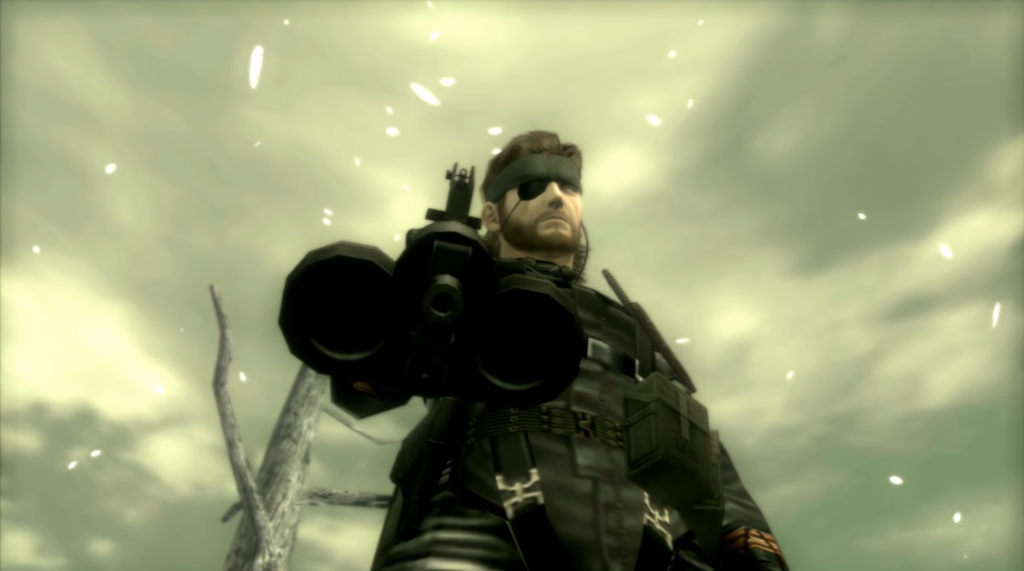
On the gameplay front, Snake Eater introduced survival elements that added new layers to stealth. Players had to contend with the wilderness itself – hunting wildlife for food, tending to injuries, and using camouflage to blend into different environments. The boss battles in MGS3 are the stuff of gaming legend, particularly the duel with The End, an ancient sniper, which can last hours – or be avoided entirely if you exploit the in-game clock.
Narratively, Snake Eater might be the series’ most heartfelt entry. It serves as an origin story for Big Boss and lays the foundation for the franchise’s lore. As Naked Snake, players infiltrate Soviet territory to rescue a scientist and confront Snake’s mentor, The Boss – a legendary soldier who has apparently defected. Their relationship is the emotional core of the game, culminating in a powerful finale that forces Snake to question his loyalties and the true cost of duty.
Wrapped in this personal story are broader themes of patriotism, betrayal, and the shifting political “scene.” The game incorporates real historical touchpoints like the Cuban Missile Crisis, blending fact and fiction to make its alternate-history plot feel uncannily plausible. By the end, Snake is a changed man, setting the stage for his transformation into the series’ future antihero. MGS3 delivers pulse-pounding stealth action and a tragic character study, making it a fan-favorite and a staple of the series’ greatness.
Metal Gear Solid 4: Guns of the Patriots (2008) – War Economy and Nanomachines
By 2008, the PlayStation 3 had arrived, and Kojima Productions used its power to craft Metal Gear Solid 4: Guns of the Patriots, the most cinematic and operatic installment of the saga. MGS4 was conceived as the grand finale of Solid Snake’s story – a chance to tie up every loose thread and give our aging hero a proper send-off. The result was an emotional, ambitious narrative extravaganza that impressed with its technical brilliance and depth, even as it courted controversy for its famously lengthy cutscenes.
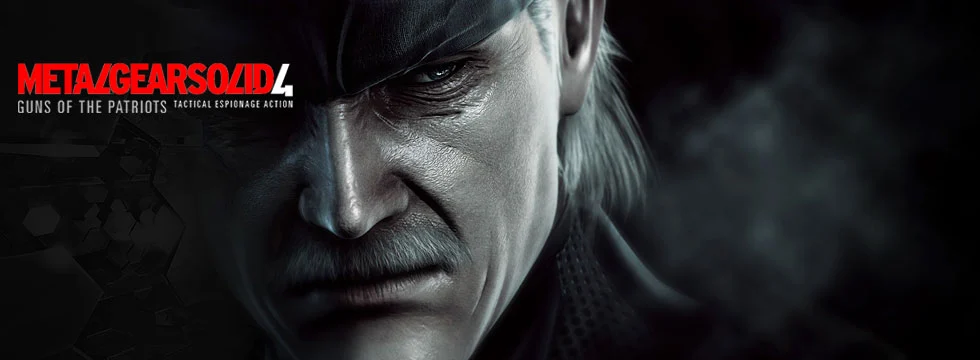
Set in a dystopian near-future, MGS4 imagines a world where war has become a privatized, computerized economy. Battles are no longer fought by nations, but by Private Military Companies (PMCs) controlled through nanotechnology. On the gameplay side, Snake can ally with or against different factions, sneak through active war zones, and customize high-tech weapons through an arms dealer named Drebin. The active camouflage suit (“OctoCamo”) automatically mimics surfaces, enhancing stealth.
Cinematically, Guns of the Patriots raised eyebrows for its long cutscenes – one famously runs nearly 90 minutes. For some, this was Kojima’s overindulgence; for others, it was essential storytelling. The plot wraps up decades of lore, with returning characters like Liquid Ocelot, Raiden, Big Boss, and Meryl. Themes include nanomachine control, loss of individuality, and the ethics of AI-driven warfare.
The emotional weight of MGS4 is undeniable. Whether it’s Snake crawling through a microwave tunnel in a literal trial by fire or the quiet, philosophical reunion with Big Boss in the finale, the game offers catharsis and closure. It’s a love letter to longtime fans and a reflection on the legacy of war, ideology, and the soldier’s soul.
Metal Gear Solid: Peace Walker (2010) – Portable Ops, Big Ideas
In 2010, Kojima Productions brought the Metal Gear experience to handheld with Peace Walker for the PSP. But don’t let the platform fool you – this is a full-fledged mainline entry and a vital chapter in the Big Boss saga. Set in 1974 Costa Rica, the game follows Naked Snake as he builds his private army (Militaires Sans Frontières) and confronts the AI-controlled weapon Peace Walker.
Designed for portable play, Peace Walker’s missions are split into bite-sized chunks. It introduced co-op multiplayer, allowing players to team up during stealth operations, and it brought in the Mother Base management system – recruiting soldiers, assigning them to divisions, and developing new weapons. This loop of infiltration and expansion laid the groundwork for MGSV.
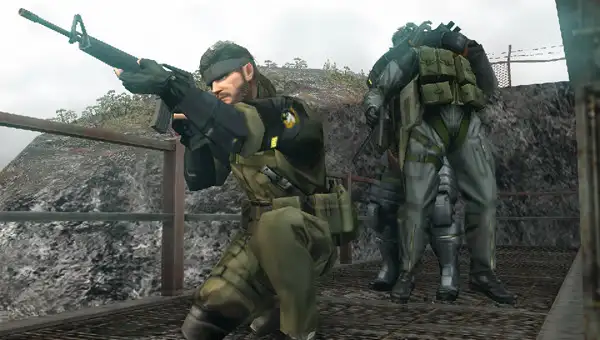
Peace Walker’s narrative digs deep into nuclear deterrence and the illusion of peace. A CIA project seeks to automate nuclear retaliation using AI logic, removing humans from the launch decision. At one point, the game forces the player to choose whether or not to build a nuke for deterrence. The story challenges the ethics of peace through strength and sets the stage for Big Boss’s eventual transformation into a rogue military leader.
Though it was on PSP, Peace Walker is regarded as one of the most content-rich and emotionally grounded entries in the franchise – an underrated gem that punches far above its weight.
Metal Gear Solid V: The Phantom Pain (2015) – Open-World Revenge
Bringing the saga to a close, Metal Gear Solid V: The Phantom Pain launched in 2015 and represented Kojima’s final entry in the series. MGSV boldly reinvented the formula with a vast open-world sandbox, allowing unparalleled freedom in how missions are approached. You play as Venom Snake, a brainwashed body double of Big Boss, building the mercenary army Diamond Dogs while seeking revenge on those who destroyed your previous base.
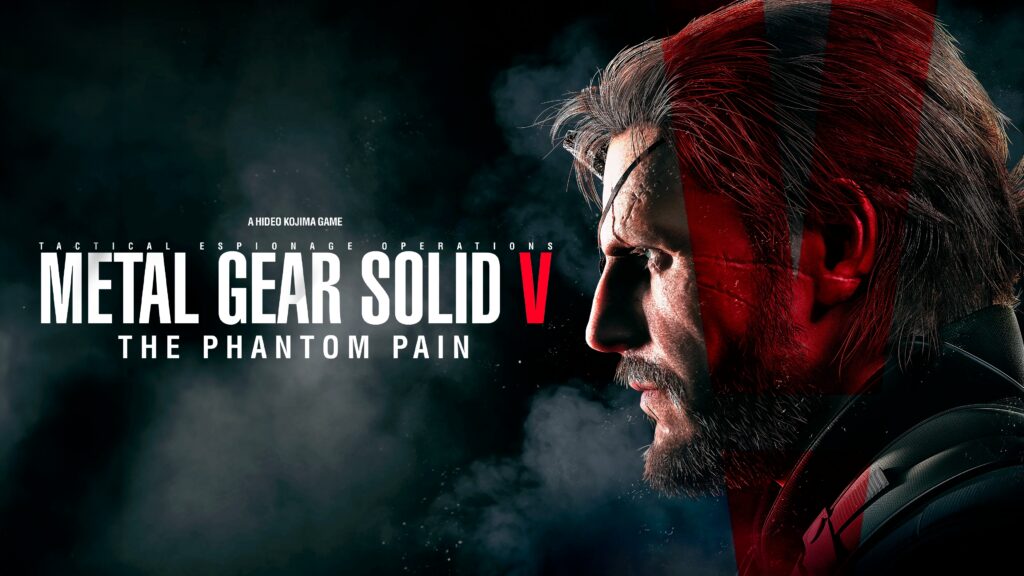
Set across Afghanistan and Central Africa, the game’s missions are flexible: infiltrate enemy outposts by day or night, use stealth or firepower, ride in on horseback or call in a helicopter. The AI adapts to your playstyle, and the game’s Mother Base building system returns bigger than ever. You can recruit soldiers, extract gear, and even kidnap goats – all to expand your base and capabilities.
MGSV’s story is darker, more subdued. Themes include revenge, identity, the cycle of violence, and language as a tool of control. The antagonist, Skull Face, seeks to use a parasite to wipe out entire languages, symbolizing a form of cultural genocide. One of the game’s most haunting moments forces the player to euthanize their own infected soldiers, blurring the lines between hero and executioner.
Narratively, MGSV drew some criticism for its unfinished structure – the latter half reuses missions, and a planned “Chapter 3” was cut due to Kojima’s split with Konami. Still, its gameplay excellence, emotional moments, and thematic ambition left a strong mark. It was the final chapter of Kojima’s Metal Gear, and he left on a powerful note.
A Saga Beyond Stealth
Looking back over the entire Metal Gear Solid series, it’s clear why it holds such a revered place in gaming history. Hideo Kojima didn’t just create a stealth-action franchise—he built an ambitious, multi-decade narrative tapestry that challenged what video games could be. With each installment, Metal Gear combined unforgettable gameplay with cinematic storytelling, while weaving in real-world issues like nuclear proliferation, the morality of war, the rise of private militaries, and the dangers of surveillance and artificial intelligence.
It’s this fusion of political philosophy and popcorn action that gives the series its lasting impact. One moment you’re sneaking past guards in a cardboard box, the next you’re grappling with questions about free will, identity, and the manipulation of truth. Few franchises dare to aim that high—and even fewer succeed.
More than just its complex characters or genre-defining gameplay, Metal Gear is a mirror held up to society. It invites players to ask hard questions, to second-guess authority, and to consider the cost of control—whether from governments, machines, or ideologies. In doing so, it has cemented itself not just as a collection of great games, but as a cultural artifact that continues to resonate.
Though the future of the series is uncertain without Kojima at the helm, the legacy he built endures. And if Metal Gear Solid taught us anything, it’s that even in a world shaped by war and misinformation, the power of one person—or one idea—can still make a difference.
So, whether you’re a longtime fan or a newcomer ready to step into the shadows for the first time: welcome to the mission. And remember…
“War has changed.”
Sources: Information in this article was drawn from official Metal Gear Solid game releases, developer interviews with Hideo Kojima, and retrospectives from outlets like IGN, GameSpot, Eurogamer, and Polygon. Additional context was informed by academic analyses on postmodernism in games, Kojima’s public commentary in interviews with Game Informer and Famitsu, and community-driven documentation from Metal Gear Wiki and fan forums.